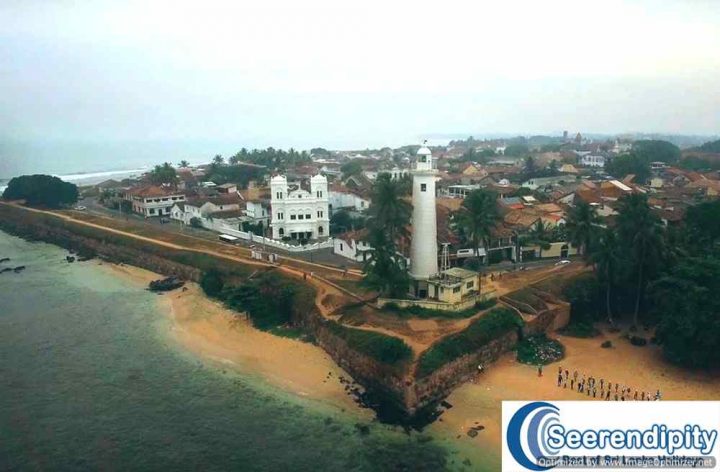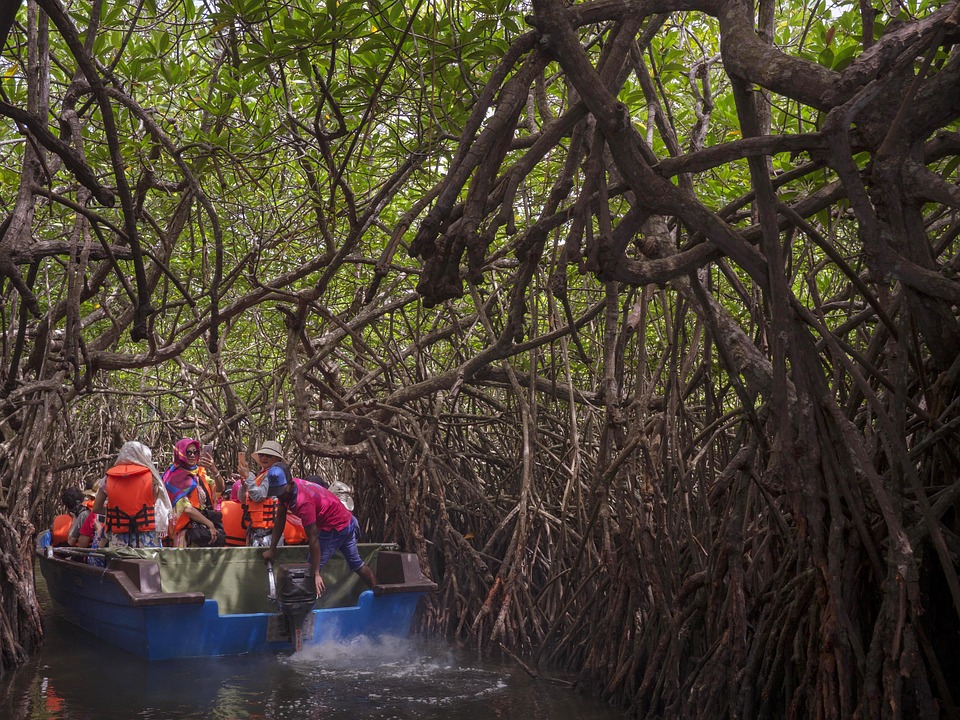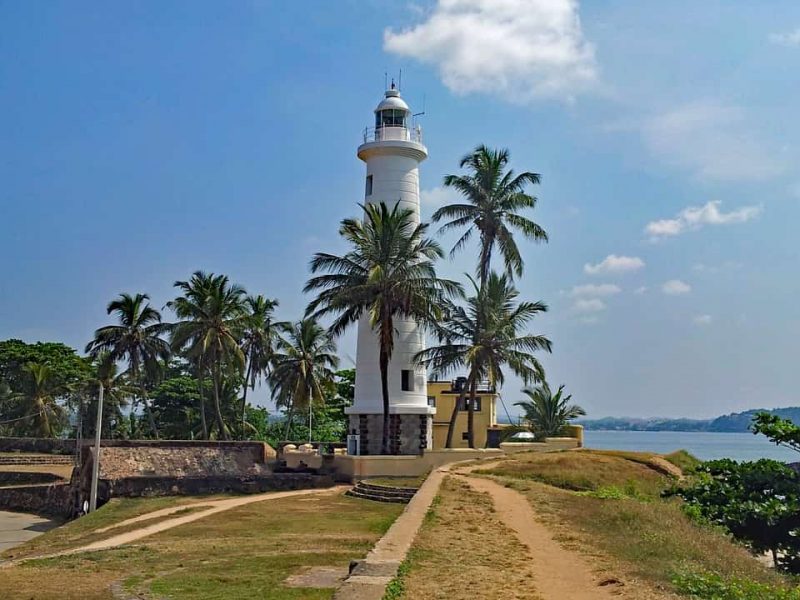Galle Sri Lanka With Old-world Charm And Palm Fringed Beaches
Table of Contents
- Galle Sri Lanka
- History of Galle Sri Lanka
- Galle Fort
- Gold
- Discovery of the hidden bunkers in the recent time
- Hotels in Galle Sri Lanka
- Where to sleep outside of Galle Fort
- How to travel to Galle Sri Lanka
- Koggala lagoon
- Exploring Galle on a day trip
Galle Sri Lanka
Galle Sri Lanka, the southern post city was once a world-renowned trade emporium glued by merchants of Arab, Greek, China, India… ply along the silk path, from east to west using ships. It is now one of the most interesting places to visit for tourists, included in most Sri Lanka road trips and welcoming millions of tourists every year.

History of Galle Sri Lanka
The history of Galle is very colourful and it goes back many millennia. Galle had been a port of Call even during the pre-Christian era, due to the Galle harbour, and it was known to the ancient seafarers as ‘Gimhathitha’, which means ‘the port near the river Gin’ (Gin Ganga).
The Sri Lankan kings exported very valuable items from the harbour and a large number of merchants from other countries such as Persia, Greece, India, China, Arab to collect those valuable items such as ivory, gemstones, spices.
A trilingual stone inscription is written in Chinese, Tamil and Persian that originated on February 14, 1409, and it was written by the Chinese Admiral, Zheng He, to commemorate his visit to Galle, the stone inscription is in the national museum of Colombo now. A copy of the same stone inscription is exhibited in the maritime museum of Galle.
Galle is also referred to by the famed Muslim Berber-Moroccan scholar and traveller Ibn Batuta, in his well-documented book ‘Rihlah’ (Travels ) who visited the island in 1344 CE. He referred to Galle as Quali/ Kali.
The first historical note of Galle goes back to the epoch of Ramayana. According to Ramayana, the origin of Rumassala is attributed to the war between Rama and Ravana. Even though Galle is not considered to have a religious background, it was the most important port city on the island during the medieval period.
In 1518, Albergaria set out with a fleet for Colombo from Portugal, but contrary winds drove him to Galle, where he remained for some time and where he even thought of erecting the fortress. Changing his mind, he came to Colombo and sent an ambassador to Kotte to announce his arrival and purpose.
Dharma Parakrama Bahu himself came to Colombo to meet the governor, who pressed the king for permission to erect a fortress in Colombo against the Muslims. The king promised to grant it after consulting his council. Muslims of Sri Lanka were enjoying a monopoly over the cinnamon, ivory, and gemstone trade during this period.
Being located near the world sea route, Galle had one of the most favourable locations to become an international trade emporium. According to the historical information, Harun ar-Rashid, the fifth Abbasid caliph, who created the popular court at Baghdad, which would be immortalized in the thousand and one night, had been to Galle port in the 8th century AD and engaged in business with Chinese traders.
Galle port is believed to be the harbour mentioned in the old testament, where King Solomon drew gemstone, ivory and other valuables. The port had been a leading trading place among international traders in the medieval period. The merchants from India, China, Persia, and Arabian countries flock to the city to exchange their goods.
Portuguese arrived in Galle in 1506 under the leadership of Don LORENZO D’ALMEIDA. Actually, they were after an Arabian merchant ship that was heading to the Maldives. But the ship of Almeida caught in a storm and drifted in the direction of Galle. They were accidentally landed on the island. Portuguese called the harbour ‘punta de Galle’, but the name was changed to ‘point de Galle’ under the British administration. Later Portuguese took the control over Galle and it’s surrounding and built the first Catholic Church on the island in 1543 near the harbour.
Due to the conflict between the Portuguese and the Kandyan king, the Portuguese constructed the first fortress in 1588 at Galle. The fortification was small and made of mud and thatched with coconut leaves. Later it was widened with a strong structure. When the Dutch came to Sri Lanka (1640), the Portuguese were not able to defend Galle by stopping the Dutch. There had been heavy fighting between the two sides.
2000 Dutch soldiers in 12 ships came to Galle under the supervision of Commander Jacob Koster. They had to fight against the Portuguese for 4 days before taking control of the port city of Galle. Galle was the administrative city of Sri Lanka under the Dutch administration. The fortification was improved under the Dutch administration. They added a sophisticated drainage system to the fort and turned the fort into a well-developed city.
As the administration of Sri Lanka peacefully changed between the Dutch and British in 1796, the importance of the port city was weakened. Colombo was developed and named the capital of Sri Lanka.
As the Colombo port was developed under the British administration, all the ships were directed to Colombo and Galle harbour was given minimum attention. All the goods such as tea, rubber, and coconut were exported from Colombo harbour and Galle lost its importance as the main trading port. Galle is a major tourist attraction in Southern Sri Lanka, today, agriculture, handicrafts and the fishing industry are the main contributors to the income of people in Galle.
Galle Fort
Galle fort is south of Sri Lanka is a perfect blend of yesterday and today, ruled by Portuguese, Dutch and English many years ago, Galle’s past not only shows the influence of the Europeans but also boast of Sri Lankan charm. There are many cathedrals within the fort, the narrow cobbled alleys crisscross the fortress giving you easy access to any part of the within a short time. Don’t forget to see the stunning sunset over the Indian Ocean.
The fort showcases some of the biggest architectural designs of the Dutch administration in Sri Lanka. If you are an architectural buff, Galle fort will definitely keep you interested with its spectacular palaces, churches, and houses adorned by Dutch architectural designs. Taking a stroll along the narrow paths of the fort takes one back in time. Sitting around in a café, smelling the sea breeze, which brushes the Indian Ocean is definitely one of the many highlights of Galle Fort.
Perhaps Galle fort is the most valuable contribution made by the Dutch East India Company to entire southern Sri Lanka. Today Galle fort is one of the most visited tourist attractions in Sri Lanka and is visited by hundreds of thousands of travellers every year. The history of Galle Fort is dating back to the first half of the 1500s. Even though the Galle fort was first constructed by Portuguese colonial rulers, there is nothing left in the Galle fort as reminiscent of the Portuguese colonial period.
Dutch, who succeeded the Portuguese have completely removed the Old Portuguese fortification and established a very sophisticated fort with all the facilities. The Galle fort is a stunning piece of architecture with typical Dutch characters, offering the possibility to explore elements of Old Dutch constructions.
Most of the buildings inherit the characteristics such as big verandah, steep roof, big doors and windows, and well within the house. Galle Fort is one of the seven world heritage sites on the island, therefore Galle is one of the most visited tourist places in Sri Lanka. Galle Fort is the best remaining ancient fort in southern Sri Lanka.
Gold
Rathnadweepa (Gold Island) is one of the ancient names of Sri Lanka. Foreigners used to call the island Rathnadweepa, not because of the richness of its beauty, gemstones and pearls. The richness of Gold had been the main reason for naming the island Rathnadweepa. Historical evidence suggests that the people of Sri Lanka were wearing beautiful gold jewellery. It was a habit of wearing gold jewellery among women and men as well. Kings and queens of ancient Sri Lanka had been wearing very valuable gold jewellery.
Archaeologists have discovered a number of Gold statues during the excavations in historical sites and the statues are dating back several hundred years. According to the historical information, the kings of Sri Lanka had exported gold jewellery from the island and foreign traders had bought gemstones, pearls as well as gold jewellery from the kings of Sri Lanka, for instance, King Solomon had sent merchants to buy gemstones, pearls, ivory and jewellery from Sri Lanka. Tarshish as in the Old Testament or modern Galle is the port, where the merchants landed on the island.
Discovery of the hidden bunkers in the recent time
There are several hidden bunkers is discovered in the Galle Fort (UNESCO declared world heritage site). It was discovered by the Galle Heritage Foundation and the Archaeological Unit of Galle city. The bunkers were discovered hidden under the clock tower and it had been a secret for centuries.
According to the archaeologists it had been either a prison cell or an armoury. Material which used to build the bunker is coral, lime, clay with a plaster-like most of the other bunkers in the fort. The bunker had been divided into 2 chambers. There are 14 such chambers recorded in the fort so far and all of them were renovated during the British rule in Sri Lanka. Archaeologists are doing further excavation in hopes to unearth the bunkers.
Hotels in Galle Sri Lanka
When planning a holiday to Galle Sri Lanka, the top priority of anyone should be finding the hotel in Galle. Some travellers just looking for clean and basic accommodation facilities at an affordable price while others searching for perks and facilities.
Whatever the requirement of the travellers the choices are endless here. A large number of accommodation facilities are concentrated within the walls of the Galle Fort. A large number of Dutch houses are converted to dormitories, guest houses, rest houses, and small hotels and some of the mansions are converted to top luxurious hotels.
The travel industry in Galle has been under rapid change, especially the Galle fort where a spree of new accommodation facilities came into being. You might not find a huge hotel here with a large swimming pool, golf ground, gymnasium etc because all these cannot be put into the building available in the fort. Neither new buildings can be built here and existing structures can be changed as it is a UNESCO world heritage site. But most of all you are well on your way to enjoying old-world charm like nowhere else on the island.
A large number of hotels and other accommodation facilities can be found outside the Galle Fort and they are available at varying prices with varying facilities, many large beach hotels are located in Galle, Unawatuna, Ahangama. A large number of small properties are also dotted along the coastal belt from Galle to the southern direction as well as towards northern Sri Lanka.
Where to sleep outside of Galle Fort
There is plenty of B&Bs, dormitories, boutique hotels and luxurious hotels suitable for short vacations and long term holidays. A large number of boutique hotels are scattered within the borders of the Galle fort and most of them provide a comfortable stay at an affordable rate. Hikkaduwa, Unawatuna, Shangama, Weligama, and Koggala are some of the popular places located within easy reach of Galle and those places provide plenty of accommodation facilities for travellers.
How to travel to Galle Sri Lanka
Whether you use private transport or public transport, you can travel to Galle from any part of the country with ease. The city is well connected with the rest of the country with a rail and road network. Being a major city on the A1 highway, Galle can be reached less than 2 hours from the international airport despite the nearly 200 km distance to cover. Galle is a major city that has a port within its borders. It immensely contributes to the economy of the island. Therefore Galle is well connected with other places such as Colombo, Kandy, Nuwara Eliya, Kataragama, Trincomalee, Jaffna. There are direct public buses to Galle from most cities in Sri Lanka while there are many numbers of daily trains from Colombo to Galle and vice versa.
Koggala lagoon
Koggala lagoon, a basin estuary, is one the most scenic and popular places for nature tours with a large concentration of fauna and flora species in Sri Lanka. It is located near the port city of Galle towards the southern tip of the island. The lagoon covers 727 hectares of surface area, which is one of the best places for Sri Lanka boat tours.
It measures 4.8 km in length and 2 km at the widest point while the depth is measured between 1-4 meters. There are 10 islands in the lagoon, namely Kath duwa, Kos duwa, Tala duwa, Medin duwa, Madol duwa, Keena duwa, Gan duwa, Kak duwa, We duwa and Kurulu duwa. Out of these ten spots only one (Gan duwa) is inhabited by the human. Rests of the islands are harbouring a vast range of animals, birds, amphibians, fishes, vertebrates and a large number of flora species.
Gan Duwa expands over 8 acres and only 4 families living on the island at present. The people on the island are having the simplest form of life that one can imagine. They have no electricity and pipe born water, but still, they are happy and love to live on the island due to the calmness and the serene atmosphere of their habitat.
One can have the opportunity to explore this isolated place, and the journey from the mainland to Gan Duwa takes a few hours with a paddleboat. And it is the best method to reach the island, while the surrounding here provide endless possibilities to enjoy nature and you need time. On the other hand, no harm is done to the virgin environment, when you travel by paddle boat.
Keep in mind, that the rich bio-diversity of the Koggala lagoon cannot be explored within a few hours even a day or two due to its vastness. Martin Wickramasinghe, a well-known writer, is one, who ascertained the value of these surroundings and enjoyed it. Therefore, he has given a prominent place to Koggala lagoon and its surrounding in his writings.
Tourism is one of the main income generators for people living on the island. Some people on the island are engaged in agriculture and they cultivate paddy, coconut, cinnamon, areca nut, jack fruit, breadfruit etc… But none of them is engaged in systematic cultivation, therefore they do not get a considerable amount of yield.
Some of the products such as cinnamon are sold to the tourists, who visit the lagoon while the rest of the products are sold at the village market in Habaraduwa. Fishing is also another important industry for people here.
One will encounter the place where the treasured stone is located, on the way to the Gan Duwa from the mainland. It is one of the deepest places in the lagoon. The treasured stone looks like a halved stone, the letters on the stone might give a clue about it, but no one has been able to read it so far. The stone inscription in the nearby temple, known as ‘Hirigal Devala’ makes some remarks on the treasure that is hidden beneath the stone.
A large number of foreigners from the nearby resorts such as Galle, Beruwala, Weligama visit the Koggala Lagoon and enjoy the natural beauty of its surrounding. But most of the tourists are escorted by motorboat and it makes some damage to the fragile Eco-system here, through the smoke and the roaring noise of the boat engines.
Recently Koggala lagoon is selected as the landing place for seaplanes in the area. It might also make a huge impact on nature. Naturalists opine that it would frighten the birds around the lake and kills the fish by the strong waves generated on the water surface by the planes.
A group of scientists from the University of Ruhuna has conducted research on the wetland of Koggala and they have discovered that ecological conditions of the lagoon are largely changed over the last few years due to human intervention and the tsunami in 2004. They further opine that there could be huge natural destruction of nature at Koggala lagoon.
Exploring Galle on a day trip
Galle one day trip is a popular activity among the local as well as foreign travellers. A large number of travellers take part in this one day trip every day, Seerendipity tours offer this one day Galle tour from Colombo and other west coast hotels, which includes many interesting tourist places such as Benbtita beach, Madu River estuary, spice garden, Mask museums as well as Galle fort. Sri Lanka Galle one day tour








“wonderful points altogether, you just gained a new reader. What would you suggest about your publish that you simply made some days in the past? Any positive?”